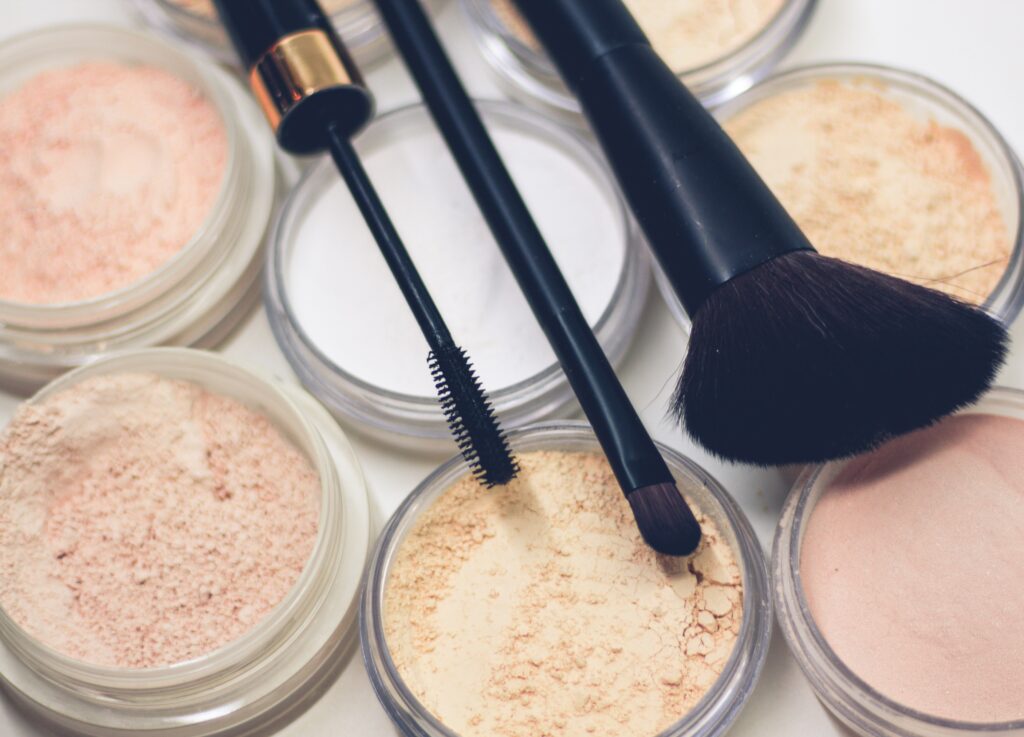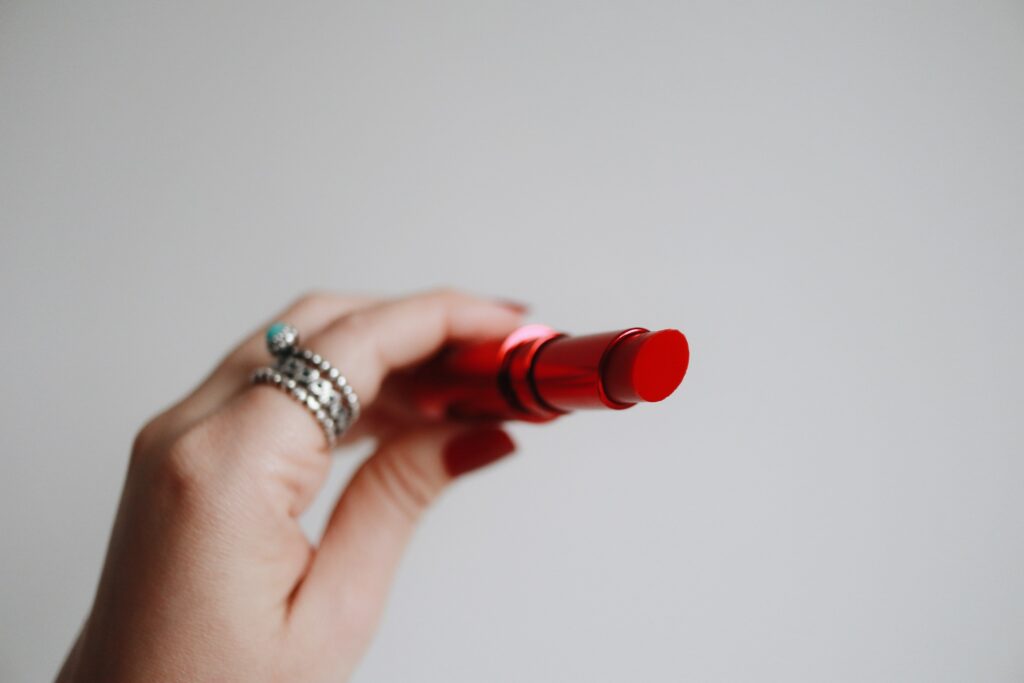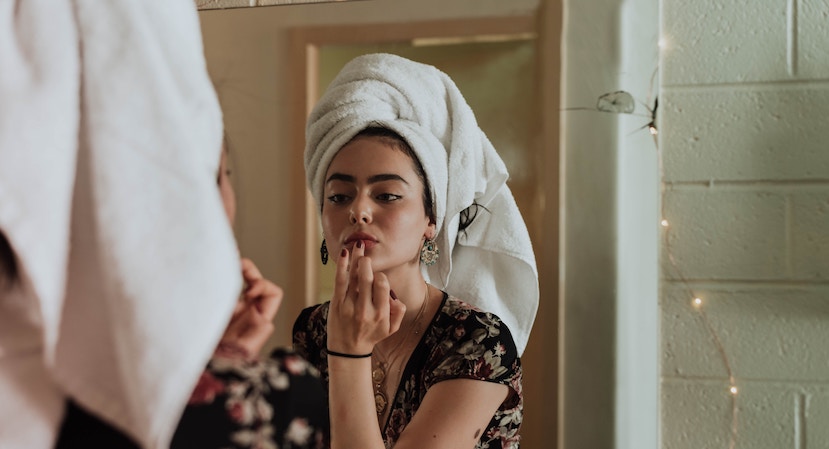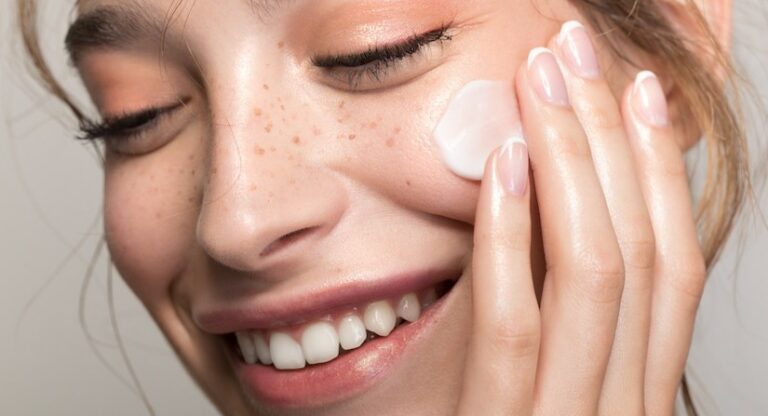Many women choose to put on at least a little makeup before leaving the house in the morning. Taking time to apply the primer, foundation, concealer, lipstick, mascara, and other beauty products perfectly is an important part of our daily routine. We love to look flawless and feel ready to take on the day with confidence.
If putting on makeup is an essential part of your routine, then it is important to understand what it could be doing to your body. Inadvertently, there is a big possibility that you have been introducing several toxins into your body through your makeup.
Despite the fact that millions of Americans use cosmetics, the Food and Drug Administration (FDA) has yet to strictly regulate the industry. That has left consumers exposed to harmful chemicals that are used in beauty product manufacturing. The FDA requires manufacturers to list the ingredients used, without demanding that all the ingredients be tested for safety. This means that, at the end of the day, it’s up to you to ensure your own safety where makeup products are concerned.
Before buying anything, whether a tube of foundation or mascara, be sure to check the ingredients in the cosmetics (like you do with skincare). The list in this article will give you an idea of what you should be looking for. In this article, we will cover:
- What is Clean Beauty
- Top 11 Harmful Ingredients to Avoid in Makeup
- Which Harmful Ingredients in Makeup Should Be Avoided During Pregnancy
- There’s Always an Alternative
What is Clean Beauty
Unfortunately, it’s hard to avoid toxic compounds in inorganic cosmetic products even when you consult the label. Sometimes, manufacturers hide harmful chemical ingredients under umbrella terms such as “fragrance” or “colors”.
Your best shot at avoiding any toxins in your makeup could be looking for “clean” or organic alternatives, or clean beauty products. Basically, clean beauty products generally will not contain the toxic ingredients that pose health risks to the body or are irritating to the skin.
Clean beauty generally involves products that have been manufactured using mostly natural ingredients (for instance, plant extracts) and also synthetic ingredients that have been tested for safety. Naturally occurring compounds are less likely to pose any danger to your skin. On the contrary, most of them will contribute to better skin health by boosting collagen production and reversing sun damage.
With organic makeup, you shouldn’t have to worry about which chemicals have been used in the formulation. Also, there shouldn’t be hard to understand ingredients and long, unpronounceable words on the label. Instead, you’ll find ingredients such as green tea and tea tree oil.
But before you take a clean break from dangerous makeup products, you need to know precisely what it is you’re supposed to be avoiding. That said, here are the top 11 makeup ingredients to avoid.
The Top 11 Harmful Ingredients to Avoid in Makeup
1. Mineral Oils
Mineral oils are a by-product of petroleum and are used in cosmetics as lubricating agents and also as preservatives. These oils have the ability to retain moisture, and they’re commonly used in products that claim to have a hydrating effect on the skin. The main concern with these oils is that they have a high risk of getting contaminated by polycyclic aromatic hydrocarbons (PAHs) during the manufacturing process.
PAHs are a group of chemicals found in petroleum that increase the risk of cancer. They can also irritate the skin and cause allergies. The presence of PAHs in mineral oils occurs when there’s a lack of stringent measures in the purification process.
Polycyclic aromatic hydrocarbons are also comedogenic. That means they clog pores, leading to breakouts and the formation of blackheads. If you do not clean your skin properly to get rid of the mineral oils, they may eventually seriously disable the skin’s ability to detoxify. The result is premature aging.
Mineral oils can be found in foundations, lipsticks, makeup removers, and lip glosses.
2. Coal Tar Dyes
Coal tar dyes are used to introduce color to products. They include diaminobenzene, phenylenediamine, and aminophenol. A by-product of coal processing, coal tar is derived from petroleum-based chemicals. Like mineral oils, coal tar is susceptible to contamination by PAHs. On its own, coal tar is carcinogenic.
Besides PAHs, coal tar dyes may also have small amounts of heavy metals such as aluminum, which are toxic to the nervous system. You can find coal tar on labels by looking for names such as phenylenediamine, or the initials C.I. (Color Index), followed by a five-digit number.
These dyes can be found in colored makeup products such as lipsticks, eyeliners, eyeshadows, and mascaras.
3. Parabens
Most cosmetics include parabens in their formulations, which act as preservatives. You can find them listed as methylparaben, butylparaben, or ethylparaben. All you need to do is look for the suffix “paraben”. When applied to the skin, these chemicals are absorbed into the body and can end up in the bloodstream. Once inside the body, parabens are believed to interfere with hormone function by mimicking the female reproductive hormone, estrogen. Excess estrogen can potentially trigger the growth of tumors and increase breast cell division. That’s why parabens have been associated with reproductive issues and breast cancer. The short-term effects of parabens include irritation such as rashes and burning skin.
Parabens can be found in foundations, concealers, mascaras, lipsticks, and eyeliners.
4. BHA & BHT
Butylated hydroxyanisole (BHA) and butylated hydroxytoluene (BHT) are synthetic antioxidants. They’re used to prolong the shelf life of products and have been shown to cause skin irritation. BHA, for one, has carcinogenic properties. Both BHA and BHT can aggravate the skin, causing allergies. BHT is a known endocrine disruptor that mimics estrogen and affects the development of male reproductive hormones. It can also cause thickening of the blood and toxicity in the liver and kidneys.
BHA and BHT are common in concealers, blush, lipsticks, and foundations.
5. Dibutyl Phthalates
Dibutyl phthalates (DBP) are used to dissolve dyes. As such, they can be found in most colored makeup products. They may not always be listed on product labels as they can be classified under fragrance. When applied topically, DBP gets into the skin, then to the bloodstream and into the body’s endocrine system. The endocrine system controls hormones responsible for reproductive function, growth and development, metabolism, tissue function, and sleep.
Once absorbed, DBP can enhance the ability of various chemicals to cause genetic mutations and disrupt the normal functioning of multiple systems in the body. Liver and kidney function are especially at risk. Early exposure to DBP may lead to early puberty in young girls.
Dibutyl phthalates are found in nail polish, blush, lipsticks, eyeshadows, and many other colored cosmetics.
6. Retinol (Vitamin A) and Retinyl Palmitate
This popular ingredient pops up in acne serums, anti-wrinkle creams, moisturizers, anti-redness creams, SPF-containing products, including sunscreens. It’s also common in mascaras, lipsticks, eye shadows, and concealers. This ingredient makes the skin smooth at first. However, under the sun, it’s been found to accelerate the harmful effects of ultraviolet rays.
Makeup containing vitamin A ingredients can bring about vitamin A toxicity. Hypervitaminosis can lead to spontaneous fractures, hair loss, liver damage, and osteoporosis.
7. Talc
Talc is a substance found in powder-form makeup. It’s used to soften and smoothen products while at the same time absorb moisture, thus preventing caking. Unfortunately, this substance, that can even be found in baby products, is a proven cancer-causing mineral. It’s easily absorbed into the bloodstream and builds up in the lung and ovarian linings. It contributes to the occurrence of ovarian cancer and the development of tumors on these linings.

Look out for talc in foundations, lipsticks, eyeshadows, and a variety of other powdered products. All of these makeup products may appear on the list of cancer causing cosmetics because of this one ingredient.
8. Lead and Mercury (Heavy Metals)
Lead and mercury are two heavy metals that may find their way into makeup either intentionally or as contaminants. Inorganic mercury is commonly used in products that are meant for skin lightening. Lead, on the other hand, is found in coloring additives. When these metals accumulate in the body, they can lead to a lot of problems. They may cause hormones to fluctuate which can then affect the neurological and reproductive systems. Damage to muscles and body organs such as the lungs and kidneys is also a possibility. Lead, for instance, builds up in tissues and bones. When one is exposed to lead for long periods of time, their fertility may be affected. Lead exposure also contributes to miscarriages.
For mercury, even the smallest amount can lead to systematic disruptions in the body. When used to bleach the skin, it causes the appearance of dark blue patches on the affected areas. The risk of using mercury is quite significant because it’s easily absorbed into the skin and blood, even when used sparingly.

Both lead and mercury can be found in concealers, moisturizing makeup products, foundations, nail color, lipsticks, eyeliners, and lip gloss.
9. Fragrance
Makeup products that are scented usually have fragrance or parfum listed among the ingredients. It’s important to note that this does not refer to one chemical. In reality, fragrances are made using a blend of many chemicals. Fragrance as a makeup ingredient, therefore, presents unknown dangers.
What you should know is that most of the chemicals used to produce pleasant smells are toxic. These are substances that can cause developmental and reproductive issues in the body. Some such as formaldehyde may even lead to cancer. Using scented products increases your risk of developing skin allergies and irritation. Fragrances can also irritate the eyes and lungs when inhaled.
You can find fragrances in toners, foundations, eyeliners, and any other cosmetic that comes with a scent.
10. Octinoxate
Octinoxate is a popular ingredient in chemical sunscreens, thanks to its ability to filter UV rays. In makeup, it’s used to enhance the absorbency of other ingredients, and also as a preservative. Octyl methoxycinnamate, escalol, parsol, parsol MOX, and 2-ethylhexyl p-methoxycinnamate are all terms that may be used on labels to mean octinoxate.
Continued use of products with octinoxate can result in skin reactions such as breakouts, and contact dermatitis. The chemical has been shown to diminish sperm count in men.
Octinoxate is used in formulations for lip balms, nail polish, foundations, and lipsticks.
11. Carbon Black
Used for pigmentation in cosmetics, carbon black can be listed as furnace black, thermal black, acetylene black, lamp black, and D & C Black No. 2. It is obtained from the incomplete combustion of carbon materials. Carbon black increases the risk of cancer. It’s also commonly contaminated by PHAs that encourage the growth of tumors in multiple body organs, including the skin.
Carbon black is usually found in eyeliners, lipsticks, foundations, eyeshadows, and mascaras.
If after looking up these ingredients, you’ve been able to pair down the makeup in your makeup bag, congratulations! If you’re anything like us, you might still have a large collection of (clean) makeup and it can be tough to decide what to bring on a trip. For tips on how to reduce the size of your toiletry bag when traveling, please check out The Enthusiast’s post on how to declutter your toiletry bag.
Which Harmful Ingredients in Makeup Should Be Avoided During Pregnancy
Some of the bad chemicals in makeup can threaten the healthy development of a fetus. Ingredients to watch out for during pregnancy include:
- Lead – The presence of lead in high concentration in expectant mothers may cause brain damage to the unborn child, or even induce a miscarriage.
- Parabens – A mother’s long-term exposure to parabens may lead to pre-term births, low birth weight, and stunted growth in babies. Due to their ability to mimic estrogen in the body, parabens may affect the growth of the reproductive system in male babies. Parabens also affect the development of neurological systems, which manifest as learning disorders later in life.
- Dibutyl Phthalates – DBP can penetrate the placenta and get into the fetus’s bloodstream, where it disrupts the endocrine system. This stunts the growth and development of virtually all vital systems in the body, leading to congenital disabilities.
- Formaldehyde (Diazolidinyl Urea) – This is an ingredient commonly found in sunscreens. Formaldehyde is a carcinogen, making it harmful to everyone, including expectant women. On product labels, look out for its common name—diazolidinyl urea. Avoid any makeup containing this highly controversial chemical when pregnant, or better yet, all together.
There’s Always an Alternative
The good thing about all this is that there are healthy, natural, and safe alternatives to these dangerous ingredients in makeup. You can effectively avoid the 11 ingredients listed above and still manage to pull off a flawless look every day. The answer to toxic-free makeup lies in natural products. There’s a steady growth of clean and organic products in the market, which makes it easier to avoid toxic ingredients in makeup completely. To make it even easier, there are apps that will help you check ingredients in cosmetics such as the Think Dirty app or EWG.
Look for ingredients such as zinc oxide, iron oxide, and essential oils. The most amazing thing about natural makeup ingredients is that instead of just covering up the skin, they also actually contribute to its healthy growth. Natural ingredients in makeup give you the benefits of chemical components without any of the accompanying side effects. Moreover, you’ll have rejuvenated skin, with no toxins building up inside your body.
Did You Enjoy This Article?
If you enjoyed this article, you might also like our articles discussing makeup such as Fake Makeup and Counterfeit Cosmetics, Natural Makeup Remover, and 15 Best Natural Foundation Brands.



